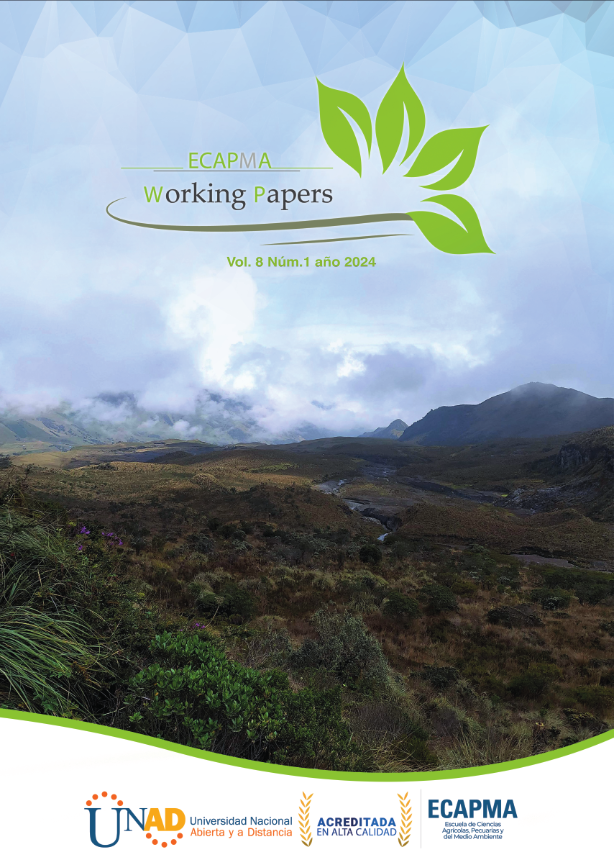Development of a cilantro crop (Coriandrum sativum) in an automated aeroponic system
Contextualization: Coriander (Coriandrum sativum) is an annual, herbaceous herb, of the Apiaceae or Umbellifera family, it has a taproot with secondary roots, its stems are straight, it has compound leaves, white flowers and aromatic fruits, it has an average height of 40 to 60 cm, Coriandrum sativum L is its scientific name, where the word Coriandrum “derives from the Greek word “Koris” which means bug (insect), in reference to the smell given off by the immature fruit of the young plant” (García, 2002, p.20), and its specific name Sativum, means that it is a cultivated plant, it currently receives other common names such as; Coriander, Chinese parsley, Arabian parsley and coriander, its origin is very little known but it is considered native to southeastern Europe and northern Africa.
The main Coriander producing countries are India, Russia, Morocco, Mexico, Romania, Argentina, Iran and Pakistan. The main importing countries are Germany, the United States, Sri Lanka and Japan, according to Reliance Spot Exchange (2011) cited in Arizio et al. (2011) “India is the world's leading producer and consumer.
Aeroponics is a cultivation technique in which plants grow in the air without using soil. This agricultural method has several advantages, such as; the maximum use of the water resource, less time in production, focused management of pests and diseases, which allows a decrease in the use of agrochemicals among others, currently an automated prototype was implemented under this technique as an object of study, using Coriander (Coriandrum sativum) as a species of great commercial, culinary and medicinal importance.
The word Aeroponics comes from the Greek terms “aero” and “ponos” which means air and work. This technique is an aspect of hydroponics, where the process consists of growing 46 plants in an aerial, closed environment, without using the soil, by supplying nutrient solutions to the roots through a mist or microspray irrigation system. According to the International Society for Soil-less Culture, Aeroponics is a system where the roots are exposed, continuously or discontinuously, to an environment saturated with fine droplets of a nutrient solution. (Arano C.R., 1990, cited by Dávila & Santos 2014).
Aeroponics dates to the 1940s and one of the first investigations on the subject corresponds to the scientist Walter Carter (1942) in his book “A method of growing plants in water vapor to facilitate examination of roots.” water to facilitate the examination of the roots, where he exposes a theory regarding the growth of plants in an aerial environment. The first aeroponic system was developed by Dr. Franco Massantini at the University of Pia (Italy), which allowed him to create so-called "crop columns". A cultivation column consists of a cylinder of PVC, or other materials, placed in a vertical position, with perforations in the side walls, through which the plants are introduced at the time of transplanting. (Durán, Martínez, & Navas, 2000).
Knowledge gap: Agriculture has become a fundamental task not only in our country, but in the entire world, since it depends on it to ensure the future food of humanity, for this reason there have been alternatives which have focused on improving the agricultural production promoting soil conservation, watersheds and above all the preservation of biodiversity, therefore, the development and efficient transformation of the agricultural sector is necessary, through planting techniques that allow improving production indicators, maintaining plants healthy, minimize the water requirement, which is one of the main advantages of Aeroponics, since a lower water requirement is designated for each square meter, and when they are used commercially, they only use a tenth of the water necessary with other cultivation methods to grow the crop as cited in (Hernández et al., 2013, p 20) therefore and referring to the above, the same does not happen in traditional crops, because "the water that does not It goes directly to the roots of the plant, it is absorbed by the soil or simply evaporated later” (Rocha et al.,2017 p 134). Therefore, it can be stated that through this innovative technique, water savings of over 80% can be obtained with respect to the total water used during irrigation time.
Colombia is a country that largely depends on agriculture as part of its economic progress, therefore, implementing the Automated Aeroponic system allows obtaining a model with the desired characteristics of the crop, in this case Cilantro (Coriandrum sativum) the which aims to demonstrate a useful, safe, ecological, sustainable and quality production style to face major economic challenges and, above all, as an efficient resource for food security and in this way have more participation and competitiveness compared to other countries in the world.
On the other hand, the development of agriculture worldwide is constant, the population growth of recent decades has influenced the development of new, more efficient production modalities that contribute to the food sustainability generated by the high demand for food. The FAO estimates (2017) that “to meet demand in 2050, agriculture will have to produce almost 50% more food, fodder and biofuel than it did in 2012” (p.21) Therefore, it has been opted to carry out intensive agriculture on large areas of land, depleting the soil and facing other problems such as pests and diseases that are generated and spread periodically and very quickly, which leads to the implementation of the uncontrolled use of agrochemicals that not only affect the soil. , but the environment and therefore the health of human beings. As pressure increases on already scarce land and water resources, the agri-food sector must look for ways to reduce its ecological footprint, which encompasses greenhouse gas emissions, water use, food waste, and its effects on soil health, ecosystem services and biodiversity. FAO (Food and Agriculture Organization of the United Nations, 2017, p.37)
Having said the above and currently, Aeroponics has become a source of study and research by universities, private companies, and public entities, which has allowed them to show their progress through articles, reports, videos, about this production system. and in this way counteract some problems mentioned above. Furthermore, Martínez, P. (2016) concludes in his article “Aeroponics as a sustainable, profitable and inclusive cultivation method in Bogotá D.C, Colombia”, that Aeroponics according to the results of the matrices carried out and the cost-benefit relationship at an urban level versus to traditional cultivation, it presents great advantages on a sustainable level even above hydroponics since natural resources are not compromised and impacted by the practice, helping to preserve and conserve ecosystems, in addition to saving with its own system through nutrient recycling and timed irrigation system.
Purpose: Detail the development of a Coriander (Coriandrum Sativum) Cultivation in an Automated Aeroponic System, likewise, make a comparison between this system and another traditional one under local agroecological conditions and therefore demonstrate the functioning of both systems.
Methodology: The project methodology was based on observation. and analysis of quantitative and qualitative data, which provide information about the behavior of the plants in the aeroponic system and in the same way of cultivation in soil, so that we can detail exemplary characteristics. throughout their entire production cycle, therefore carried out a comparative analysis of the development and growth of the Coriander plants (Coriandrum sativum) in the two systems of agricultural production.
Results and conclusions: During the development of Cilantro (Coriandrum sativum) plants in soil, results were obtained such as the period for germination, color before, during and after the process, final height of the plants for harvest, total weight of aerial biomass and time productive cycle and external and internal factors that could affect the development of plants. In the aeroponic system, both qualitative and quantitative results were obtained, such as, for example, the final gain of aerial biomass, final average height, taking the square meter as a reference, the production cycle time, the color of the plants and external factors that may interfere with the development of the specimens.
To conclude, in the aeroponic system the plants had better performance, greater weight in foliage, shorter productive cycle, greater height compared to a traditional system in soil, on the other hand, in what corresponds to other factors such as time, percentage and quantity of germinated seeds, there was no major difference in both procedures.





